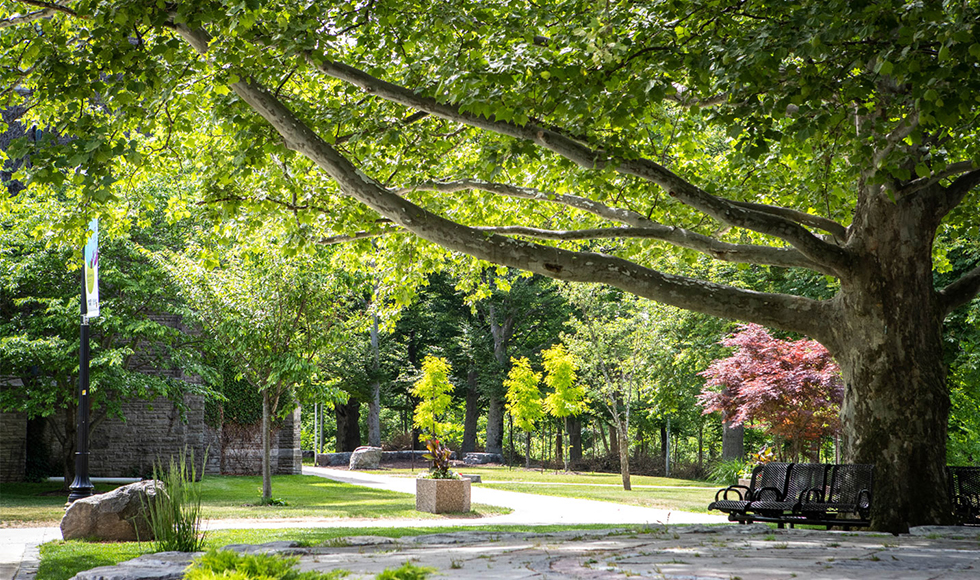The story behind your favourite tree on campus

Lindens and pines and burs — oh my! Whether you’re in Gilmour Hall, the hospital, or across Cootes, a quick peek out of the window will showcase the many different trees that call McMaster home.
Students in the Arts & Science Program’s Trees Inquiry course write portraits — detailed descriptions drawing on history, science, geography, cultural significance, and environmental importance — of each species and presenting their findings to their peers.
While the course typically culminates with a principal research project, this year was a little bit different. Acknowledging the comprehensive nature of the student-made portraits, Dr. Alison McQueen suggested that, using the information already gathered, the class work together to create a public info resource in lieu of their final project. The result: Trees@Mac, an interactive website designed to present accessible information about the wealth and diversity of trees on campus.
“The smaller class size really enabled us to do something like this,” McQueen says. “Instead of doing a typical final research paper, we all agreed that working together on something like this would be more worthwhile. We each brought different skill sets to the table — it was a really collaborative effort.”
While some students brought web-savviness to the group and others brought project management skills, McQueen says her background in art history played a role in identifying some of the different species.
“As an art historian, my skills allow me to identify the work of a particular artist,” she explains. “Those same visual skills allow me to differentiate between the many tree species on campus. This way of thinking also allows me to place each tree in its proper context environmentally, scientifically, medically, historically, and culturally.”
The website combines that type of information and applies it to more than 30 different species of trees, while also displaying each tree’s exact coordinates on a map of campus. You can instantly locate the nearest Chinese Magnolia Tree, see a photo and learn about its significance.
“Learning about the trees on campus was a very hands-on process that involved a lot of exploring, discovery, and inquiry,” says Ian McIntosh, a Level III Arts & Science student who wrote several of the portraits for the website. “I found it especially interesting because not only were we learning about particular types of trees or even trees in general, but it also allowed me to look at the campus with a new perspective, to appreciate different things about it, and notice things I hadn’t before.”
McQueen hopes that, like McIntosh, students, staff, and faculty members use the tool to learn more about the trees that make up the campus grounds.
“I hope that people start to notice more of the trees around campus and use this tool as a means to learn more about them,” she says. “People take for granted the bounty of beauty we have here, but it really is an arboretum. This website invites people to engage with that beauty a little bit more — it supports learning and provides knowledge, which, as a university, is what we’re all about.”
McQueen says the plan is to keep the site updated as the campus landscape continues to evolve and suggests that it may someday have a companion app or physical supplements like plaques, signs, or maps around campus.


